mobile View, to the German Version tap the flag


- Hellenic Republic / Greece
- parliamentary republic
- own name: Helliniki Dimokratía
• Flags
• Historical Flags
• Meaning/Origin of the Flag
• Coat of Arms
• Meaning/Origin of the Coat of Arms
• regional Flags
– Athos (Hagion Oros)
– Crete
– Samos
– Epirus
– Macedonia
– Ionian Islands
• Aircraft Roundel
• Map
• Numbers and Facts
• History
• Origin of the Country's Name
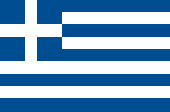
National, state, merchant and naval flag,
ratio = 2:3,
Source, by:
Corel Draw 4





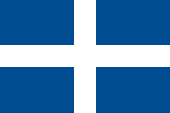
unofficial national flag,
ratio = 2:3,
Source, by: Wikipedia (DE)





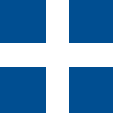
Naval jack,
ratio = 1:1,
Source, by:
Flags of the World



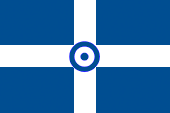
Flag of the Air Force and civil air ensign,
ratio = 2:3,
Source, by:
Flags of the World



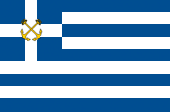
Flag of the Coast Guard,
ratio = 2:3,
Source, by:
Flags of the World




Standard of the President,
ratio = 1:1,
Source, by:
Flags of the World



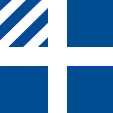
Flag of the Premier,
ratio = 1:1,
Source, by:
Flags of the World



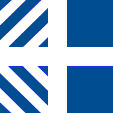
Flag of the Minister of Defense,
ratio = 1:1,
Source, by:
Flags of the World



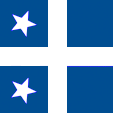
Flag of a Vice-Admiral,
ratio = 1:1,
use douptful



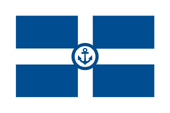
Flag of the Harbours Masters,
ratio = 1:1,
Source, by:
Die Welt im bunten Flaggenbild




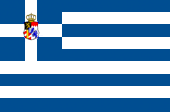
1833–1863,
War and naval flag,
ratio = 2:3




1924–1935,
Flag of the President,
ratio = 1:1,
Source, by:
Flags of the World



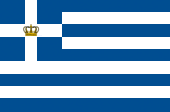
1935–1973,
War and naval flag,
ratio = 2:3,
Source, by: Die Welt im bunten Flaggenbild



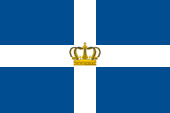
1935–1973,
State flag,
ratio = 2:3
Source, by: Die Welt im bunten Flaggenbild



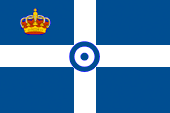
1935–1973,
Flag of the Air Force,
ratio = 2:3
Source, by: Die Welt im bunten Flaggenbild



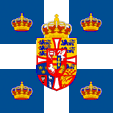
1935–1973,
Standard of the King,
ratio = 1:1,
Source, by: Die Welt im bunten Flaggenbild



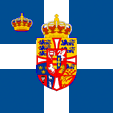
1935–1973,
Standard of the Crown Prince,
ratio = 1:1,
Source, by: Die Welt im bunten Flaggenbild



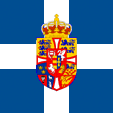
1935–1973,
Standard of the Princes,
ratio = 1:1,
Source, by: Die Welt im bunten Flaggenbild




1973–1978,
National flag,
ratio = 2:3,
Source, by:
Die Welt der Flaggen



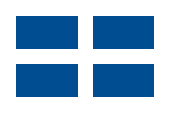
Pilot flag (Pilot Call flag),
ratio = 2:3,
Source, by:
Flags of the World,
FOTW
This type of flag was abolished in the 20th century, today is:
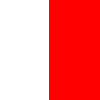 Pilot on board
Pilot on board
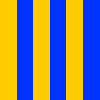 Call for Pilot
Call for Pilot




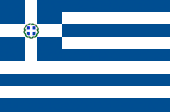
Naval flag,
ratio = 2:3,
Source, by:
Flaggen und Wappen



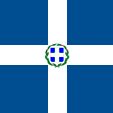
Naval jack,
ratio = 1:1,
Source, by:
Flaggen und Wappen



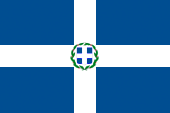
Standard of the President,
ratio = 2:3,
Source, by:
Flaggen und Wappen




The today's version of the flag was re-introduced on 22nd of December, 1978. The nine stripes correspond to the nine syllables of the Greek battle-cry "Eleutheria i Thanatos" ("Freedom or Death"), or "Eu togio nika" ("be victorious in this sign"). Both mottos came down from the times of the struggle for freedom against the Turks. The flag is named by the Greek "Galanolevkos", what simply means "pale-blue-white". The flag probably came into being in 1821/1822 during the struggle for freedom of the Greeks against the Turks. At the time a white-blue cross-flag was hoisted on Greek ships. The emergence and the origin of the cross-flag is not to comprehend exactly. It was allegedly created as an Orthodox priest gave his blue robe, to unite it cruciform with the white robe of a Greek freedom fighter. On the occasion of the independence in 1822 the striped flag was created. The cross motive moved into the upper corner and nine horizontal stripes in blue and white were added (5 blue stripes, white stripes 4). The cross in the cross flag was at that time and is until today a counter-symbol to the Islamic Crescent. During the following years frequent changes were made in the use between cross and stripe flags, or both were valid at the same time, or the shade of the blue of the flag was changed. The cross-flag is still unofficially in use. It should represent the Greek mainland. However, it is also the flag of the Epirus region, and the Greek word "epirus" means "mainland". It may be that there is given a misunderstanding.
Source:
Flags of the World,
World Statesmen,
Die Welt der Flaggen,
Flaggen Wappen Hymnen

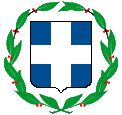
Coat of arms of Greece,
Source, by:
Corel Draw 4

Today's coat of arms of the state was introduced on the 7th of June, 1975 after the abolition of the monarchy: The blazon shows a silvery cross on blue ground. It stands for Christianity. The blazon is surrounded by a green laurel wreath. It symbolizes the thousands of years old history of the country.
Source:
Flaggen Wappen Hymnen

Aghion Oros / Athos:
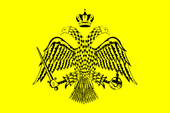
Autonomous monastic-republic on the Khalkidhikí Peninsula,
more Info?
click or tap here
Crete:
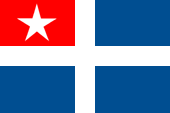
From 1898 to 1913 independent, today a part of Greece,
more Info?
click or tap here
Samos:
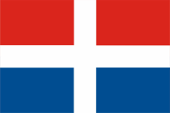
From 1832 to 1912 Principality, today a part of Greece,
more Info?
click or tap here
Epirus:

Greek province,
more Info?
click or tap here
Macedonia:
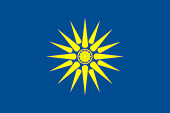
Greek province



Ionian Islands:
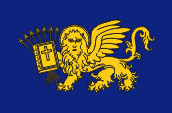
From 1800 to 1815 Free State under Russian sovereignty,
more Info?
click or tap here
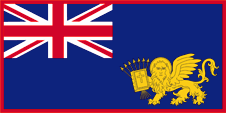
From 1815 to 1863 British, today a part of Greece,
more Info?
click or tap here


Aircraft Roundel,
Source, by: Wikipedia (EN)

Location:
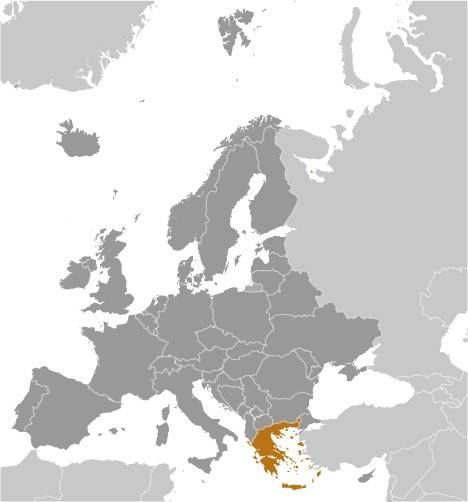
Source: CIA World Factbook
Map of the country:
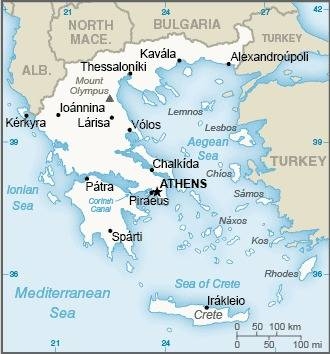
Source: CIA World Factbook

Area: 50.949 square miles
Inhabitants: 10.718.565 (2020), thereof 97,4 % Greeks, 1,2 % Macedonians, Albanians, Bulgarians, 0,5 % Turks
Religions: 96 % Greek Orthodox, 2 % Non-Religious
Density of Population: 210 inh./sq.mi.
Capital: Athênai (Athens), 664.046 inh. (2011)
official Language: New Greek
other Languages: Albanian, Turkish, also English
Currency: 1 Euro (€) = 100 Cent
Time Zone: GMT + 2 h
Source: Wikipedia (DE)

12th – 1st cent. B.C. · settlement of today's Greece by Greek Tribes, development of the classical Greek high culture
148 B.C. · Northern Greece (Macedonia) becomes a Roman province
27 B.C. · Southern Greece (Achaia) becomes a Roman province
395 · at the partition of the Roman Empire Greece comes to the East Roman Empire (Byzantium)
6th century · massive immigration of Slavic tribes, end of the Hellenic Greek culture, remnants of it remain for a few years on the Ionian Islands and Crete
1393–1460 · conquest of Greece by the Turks
1821–1829 · war of liberation against the Turks
1st of January 1822 · takeover by the Greek national assembly
14th of September 1829 · Peace of Adrianople, the Ottoman Empire recognizes Greece
1832 · Greece becomes a Kingdom, the National Assembly elects the Bavarian prince Otto I. as King of Greece
1833 · several European countries grant Greece - despite existing debts amounting to several millions - a loan of 60 million francs, France seized the first tranche of the loan to pay off the previous debts
1840 · Greece comes close to insolvency, the King of Bavaria Ludwig I. helps his son Otto I, King of Greece, with a million credit, against pledge of reforms, never payed back the until the death of Ludwig I. in 1868, European financial experts advise the Greek Government
1842 · a French business delegation visits the country and examins the possibility of granting a further loan of 20 million francs, if there will be reforms of the tax authorities, Greece promises austerity measures
1843 · Greece can not even pay the loans for the debits which are already in process, the European states demand austerity measures, there are riots, the European financial experts become expelled from the country and confiscated all their assets
1862 · coup in Greece, King Otto is overthrown, the new king is as George I. the Danish Prince William
1865 · establishment of the Latin Monetary Union (France, Belgium, Italy, Switzerland), controlled delivery of equivalent notes and coins
1867 · Greece joins the Latin Monetary Union
1885 · revision of the Latin Monetary Union after Italy and Greece have brought masses of paper money in circulation
1908 · after Italy and Greece have still brought - en masse - paper money in circulation, compensations become demanded from the two countries
1919–1922 · Greek-Turkish war, defeat of Greece
1923 · overthrow of the King
1924 · proclamation of the republic
1935 · re-introduction of the monarchy
1941–1944 · World War II, Greece is occupied of German troops (Athens and surrounding area, Macedonia and West Crete), Italian troops (in almost all Greece, to September 1943) and Bulgarian troops (in the northeast, to 1944)
1944–1949 · civil war
1967 · military coup d'etat, overthrow of the King, establishment of a military dictatorship ("colonels' rule"), the King leaves the country
1973 · abolition of the monarchy
1974 · end of the military regime
1981 · Greece joines the EU
1992 · Greece does not recognize the Republic of Macedonia
1995 · recognition of the sovereignty of Macedonia
2001 · Greece joins the euro zone by providing of false financial figures
2001-2010 · Greece - state, citizens, companies and banks - procure by the favorable terms of the Euro Zone cheap credits that accrue on a debt of 315 billion euros, Greece claimes financial aid from the euro zone, against the promise of reforms
2010-2015 · Greece gets huge financial support, but can not reach a substantial repayment of its debts, not least because of the refusal of reforms and refusal of the intensification of ongoing austerity measures
5th of July in 2015 · a referendum confirms the course of the Greek government against effective reforms and against the intensification of ongoing austerity measures
November 2015 · Greece gets another financial aid package, linked with an enforcement of effective reforms and under intensification of ongoing austerity measures
12th of February 2019 · the Republic of Macedonia changes its name to Republic of North Macedonia and thus achieves full political recognition by Greece
Source:
Atlas zur Geschichte,
Discovery '97,
Weltgeschichte,
1) Wikipedia (DE),
2) Wikipedia (DE),
Die Welt

The name of Greece goes back to the Greek word "graikoi", with this it is reminiscent of the Indo-European word "gra", which means "old" or "venerable". This makes Greece the "Old Country".
Source:
Atlas der wahren Namen


![]()








































